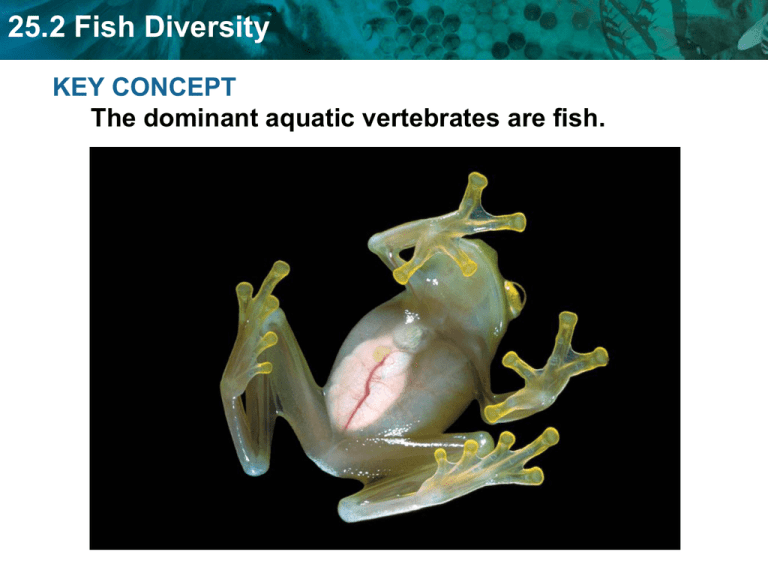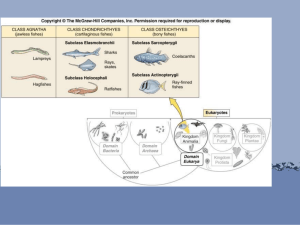
25.2 Fish Diversity
KEY CONCEPT
The dominant aquatic vertebrates are fish.
25.2 Fish Diversity
Fish are vertebrates with gills and paired fins.
• Fish use specialized organs called gills to breathe
underwater.
– sheets of thick, frilly tissue filled with capillaries
– take in dissolved oxygen from water, release carbon
dioxide
water
flow
25.2 Fish Diversity
• Countercurrent flow is the opposite movement of water
against the flow of blood in the fish’s gills.
25.2 Fish Diversity
• Fins are surfaces that project from a fish’s body.
– keep fish stable
– redirect water around fish as it swims
– help fish maneuver in water
dorsal fin
caudal fin
pectoral fin
anal fin
pelvic fin
25.2 Fish Diversity
Jaws evolved from gill supports.
• Jaws developed from gill arches located around the
pharynx.
cranium
cranium
cranium
mouth
gill arches
mouth
mouth
• Jaws gave vertebrates a huge advantage as predators.
25.2 Fish Diversity
Only two groups of jawed fish still exist.
• Cartilaginous fish and bony fish are still in existence.
• Cartilaginous fish have skeletons made of cartilage.
25.2 Fish Diversity
• Cartilaginous fish include the Holocephali and
Elasmobranchs.
– Holocephali include ratfish, a small group of deep-sea
fish.
– Elasmobranchs include sharks, rays, and skates.
25.2 Fish Diversity
• All fish have a lateral line system.
– sensory system
– sensitive to small changes in water movement
lateral line
25.2 Fish Diversity
• Bony fish have skeletons made of bone.
– operculum protects a bony fish’s gills
– movements of operculum help bony fish move water
over gills










